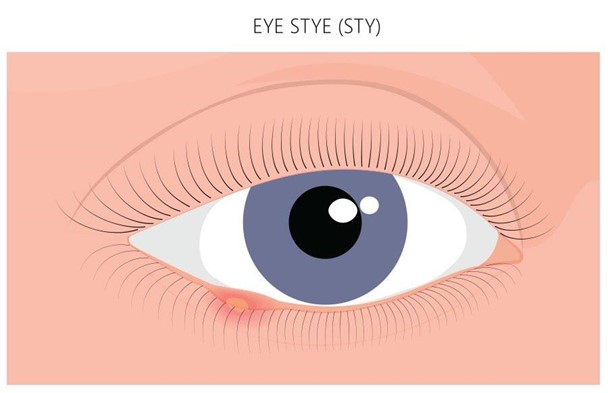A client diagnosed with a sty of the eye asks what can be done for treatment. Which of the following options will the nurse provide to the client?
An antifungal cream will be prescribed
Apply warm compresses several times a day
Use ice and cold compresses 3 times a day
You will need to have the other eye tested for vision loss
The Correct Answer is B
Choice A Reason: An antifungal cream is not indicated for a sty, which is an infection of the eyelash follicle or sebaceous gland caused by bacteria.
Choice B Reason: This is the correct answer because warm compresses can help relieve pain and inflammation, and promote drainage of the sty.
Choice C Reason: Ice and cold compresses are not recommended for a sty, as they can constrict blood vessels and delay healing.
Choice D Reason: There is no need to test the other eye for vision loss, as a sty does not affect vision unless it is very large or obstructs the pupil.

Nursing Test Bank
Naxlex Comprehensive Predictor Exams
Related Questions
Correct Answer is D
Explanation
Choice A reason: This is incorrect because the nurse should not include this in teaching. Massaging the affected side multiple times a day can trigger an acute onset of trigeminal neuralgia. Trigeminal neuralgia is a condition that causes severe pain in one or more branches of the trigeminal nerve (cranial nerve V), which innervates the face. The pain can be triggered by touch, pressure, or movement of the face. The nurse should advise the client to avoid touching or stimulating the affected side.
Choice B reason: This is incorrect because the nurse should not include this in teaching. Applying ice directly to
the skin can trigger an acute onset of trigeminal neuralgia. Trigeminal neuralgia can be triggered by temperature changes or cold stimuli on the face. The nurse should advise the client to avoid exposure to cold air or wind and to protect their face with a scarf or mask.
Choice C reason: This is incorrect because the nurse should not include this in teaching. Providing pureed consistency foods can trigger an acute onset of trigeminal neuralgia. Trigeminal neuralgia can be triggered by chewing, swallowing, or talking. The nurse should advise the client to eat soft foods that do not require much chewing and to avoid hot or spicy foods that can irritate the mouth.
Choice D reason: This is correct because the nurse should include this in teaching. Considering alternative therapies such as yoga, biofeedback or meditation can help prevent triggering an acute onset of trigeminal neural
Correct Answer is C
Explanation
Choice A Reason: Educating the client about the therapy is an important action by the nurse, but not the priority one. The nurse should explain the purpose, procedure, benefits, and risks of hydrotherapy to the client before starting it, but only after ensuring their comfort and pain relief.
Choice B Reason: Providing analgesics after therapy ends is not enough, as the nurse should provide them before and during therapy as well. Hydrotherapy involves cleansing and debriding of burn wounds with water jets or whirlpools, which can be very painful and stressful for the client.
Choice C Reason: This is the correct choice. Providing analgesics before therapy begins is the priority action by the nurse, as it reduces pain and anxiety for the client and facilitates wound healing. The nurse should assess the client's pain level and administer appropriate analgesics at least 30 minutes before hydrotherapy.
Choice D Reason: Ensuring there are clean supplies is an essential action by the nurse, but not the priority one. The nurse should use sterile or clean equipment and solutions for hydrotherapy to prevent infection and contamination of burn wounds, but only after ensuring their comfort and pain relief.
Whether you are a student looking to ace your exams or a practicing nurse seeking to enhance your expertise , our nursing education contents will empower you with the confidence and competence to make a difference in the lives of patients and become a respected leader in the healthcare field.
Visit Naxlex, invest in your future and unlock endless possibilities with our unparalleled nursing education contents today
Report Wrong Answer on the Current Question
Do you disagree with the answer? If yes, what is your expected answer? Explain.
Kindly be descriptive with the issue you are facing.
